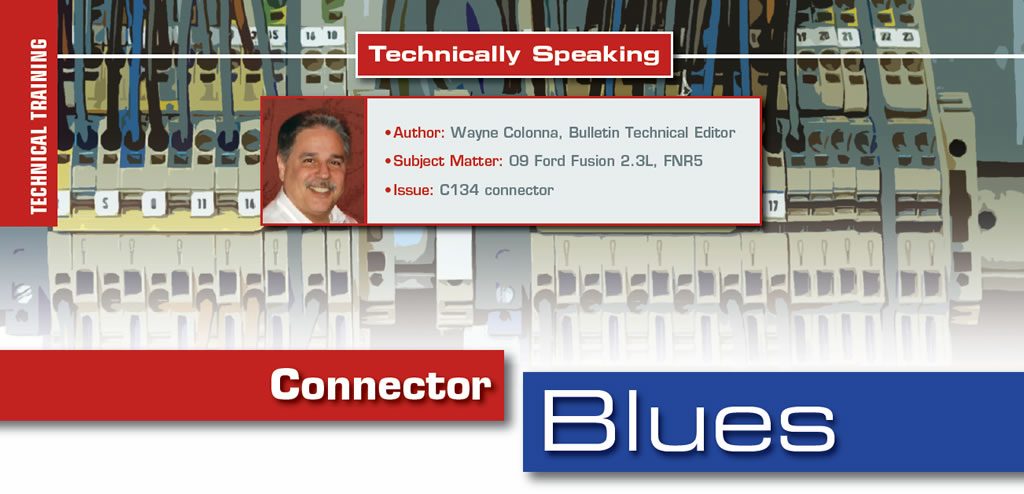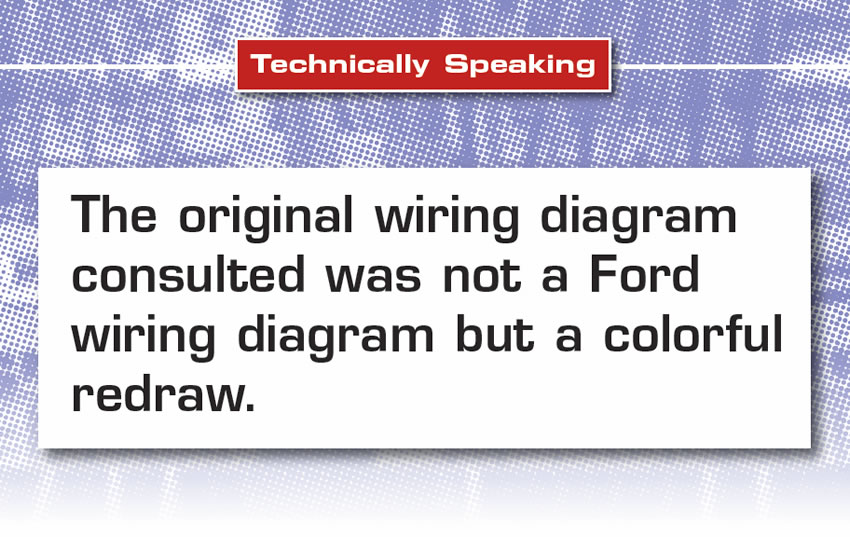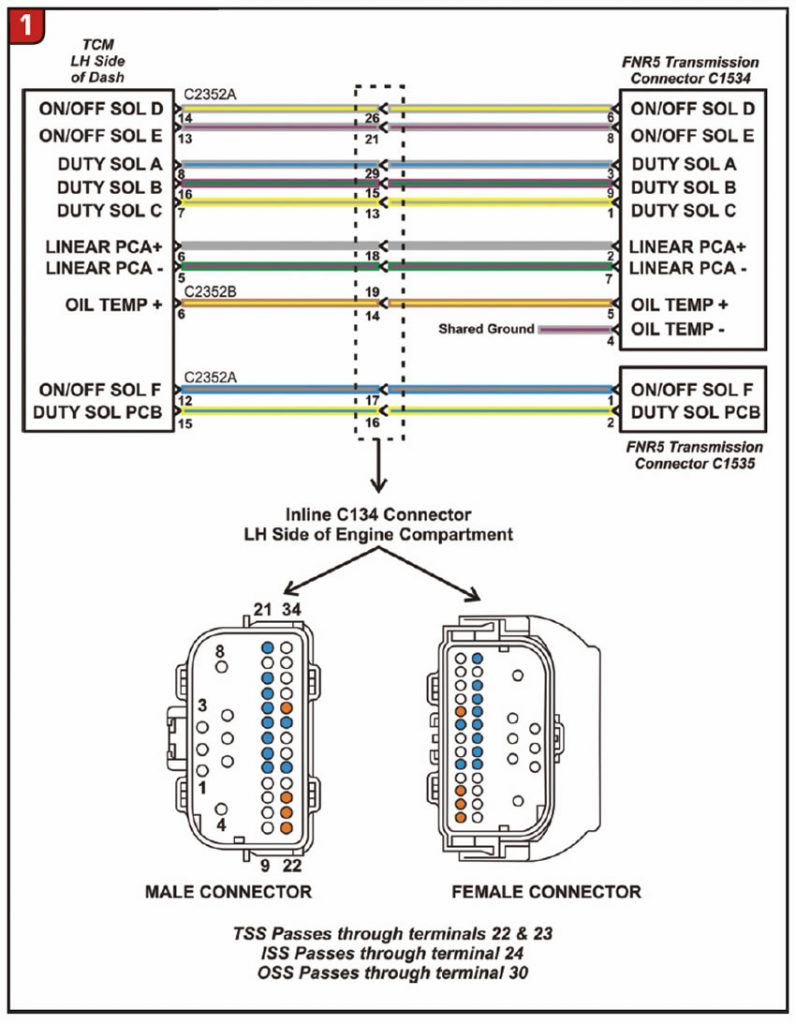
Technically Speaking
- Author: Wayne Colonna
- Subject Matter: ’09 Ford Fusion 2.3L, FNR5
- Issue: C134 connector
Wayne Colonna focuses on water contamination of the C134 connector in an FNR5.
A 2009 Ford Fusion 2.3L coupled to an FNR5 transmission comes in to a shop with a host of solenoid codes, gear ratio codes and speed-sensor codes.
With such a host of codes, the first inspection was a visual one looking at the speed-sensor connectors and the two transmission solenoid connectors. Each of these connectors was unplugged and cleaned during the inspection and plugged back in. Codes were cleared with the intention to drive the vehicle to see if any codes returned. Immediately upon startup, a few solenoid electrical codes set and a TSS code set.

At this point a wiring diagram was obtained where checks were made from the TCM. From this testing, high resistance in several circuits was confirmed. The wiring diagram pulled showed the wiring ran directly from the TCM to the transmission. For so many circuits to have a high-resistance issue, it would make more sense to have a corroded pass-through connector. The original wiring diagram that was looked at was not a Ford wiring diagram but a colorful redraw.
It was then decided to obtain a Ford wiring diagram, and sure enough, it was discovered that between the TCM and the transmission is an inline connector called the C134 connector (Figure 1). This connector is buried in the left-hand side of the engine compartment. Once located and unplugged, the connector was found to have been water contaminated. The connector was in a good enough shape that a good thorough cleaning fixed the problem.

Since its discovery ATSG has encountered this problem on other Ford vehicles with the FNR5 transmission as well. Be sure to look here first when solenoid and/or speed sensor and ratio codes riddle an incoming car. This can cause connector blues trying to fix this issue, especially when using a wiring diagram that does not inform you that this connector exists. Maybe we should call this article “connector greens” instead of the “connector blues” because now you can make some green as you clean the green!














